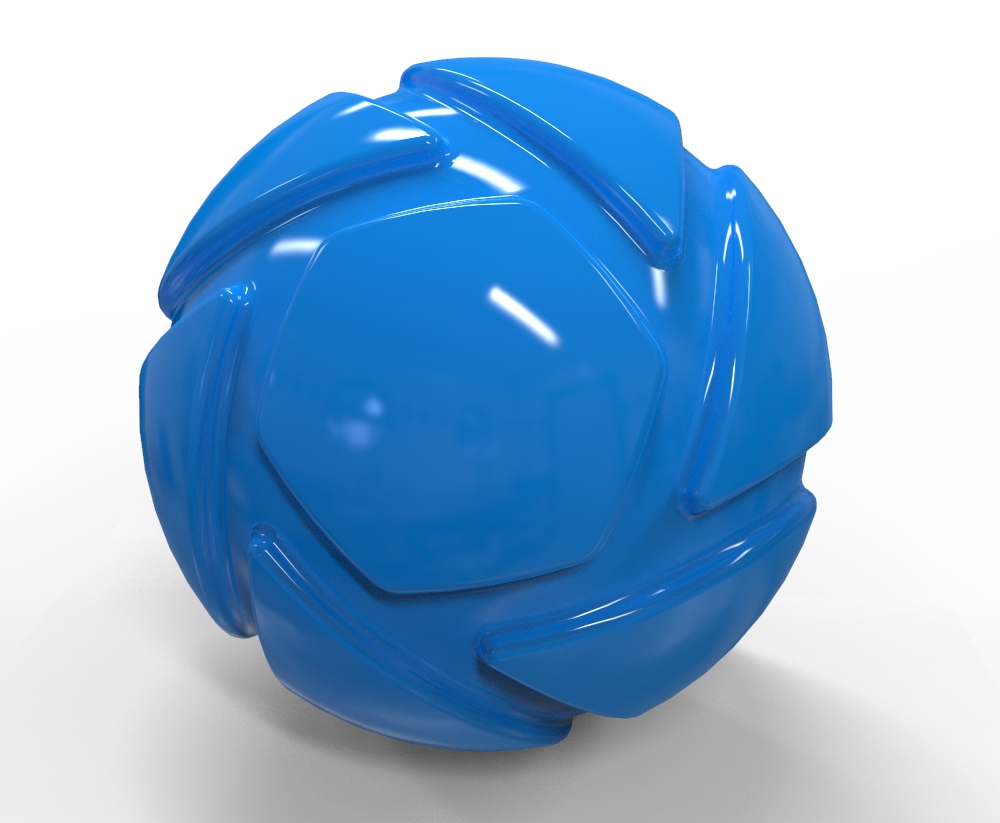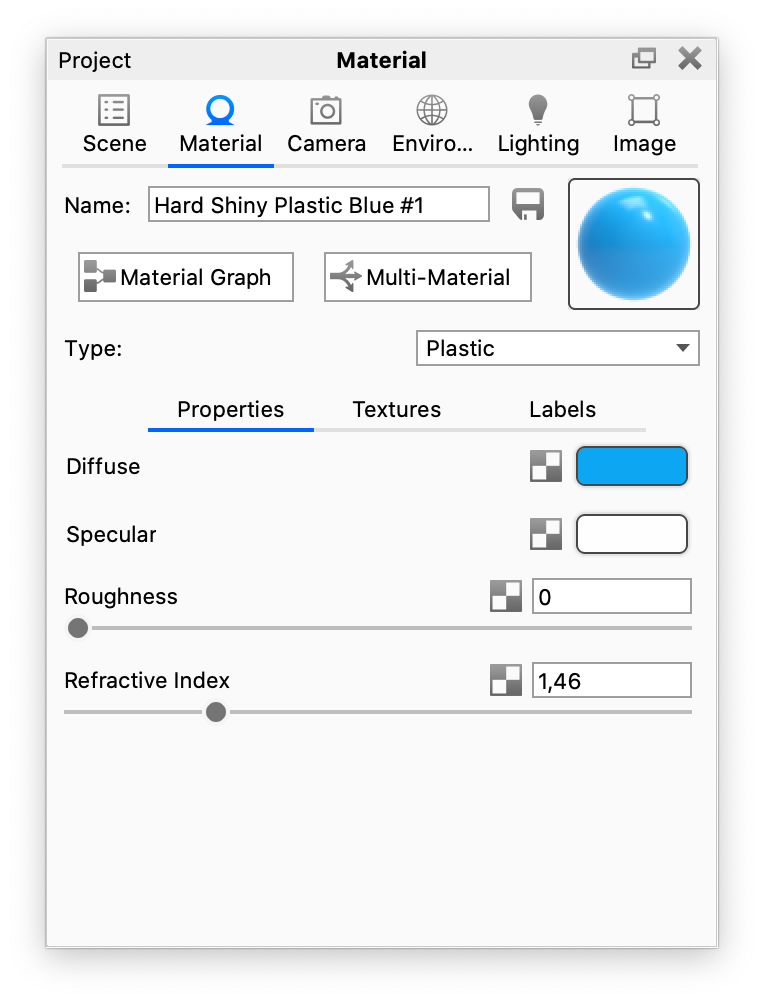On this page

The Plastic Material Type provides the basic settings needed to create simple plastic materials. Set the diffuse (overall color) and add some specular (reflections), then adjust the roughness. This is a very versatile material type that is used for anything from concrete to woods.
Diffuse
This can be thought of as the overall color of the material. Click the color box to open the Color Picker and select your desired color.
Specular
This is the color and intensity of the reflection of light sources within the scene. Black will completely turn off reflections, while white will provide a very shiny plastic look. Realistic plastic does not have color in the specular value, so generally you should use some level of gray or white. However, adding color can give the plastic material a metallic effect.
Roughness
This will add microscopic levels of imperfections to the surface of the material when the values are increased. When set to 0 a material will appear perfectly smooth and polished. When the value is increased, the material will appear more rough as light is diffused across the surface.

Refractive Index
This controls how much light will bend or “refract” as it passes through parts that have this type of material. The default of 1.5 is accurate for simulating most types of plastics, but you can increase the value to create a more dramatic refraction within the surface.